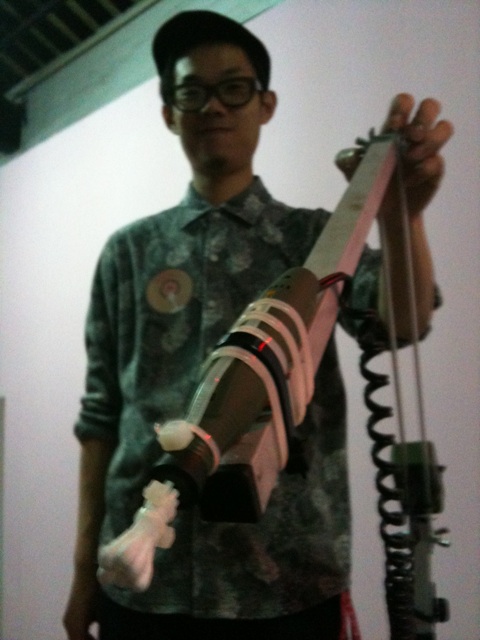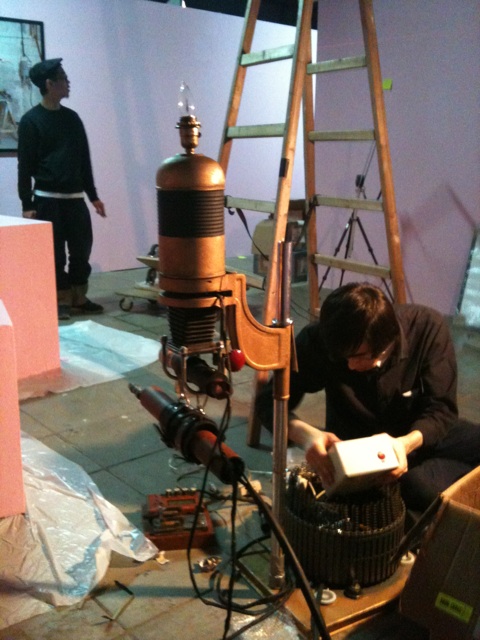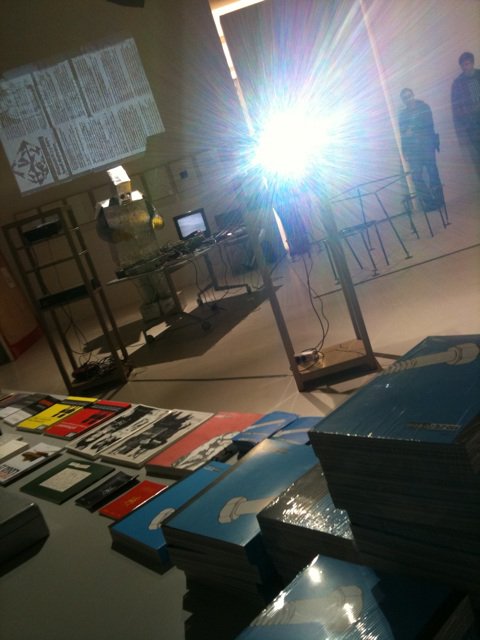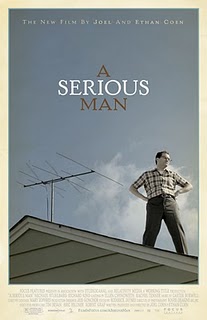monochrom #26-34: Book release in Hong Kong
monochrom #26-34 Release Party in Hong Kong! April 2, 2010 -- 6 PM at Videotage (Unit 13, Cattle Depot Artist Village, 63 Ma Tau Kok Road, To Kwa Wan, Kowloon, Hong Kong)!

Link
posted by johannes,
Wednesday, March 31, 2010
Reminder: Techno(sexual) Bodies / Arse Elektronika in Hong Kong
We are setting up Arse Elektronika in Hong Kong! All goes well so far!

Techno(sexual) Bodies: Arse Elektronika X Videotage / Artist Talk @ Dorkbot-HKSpeakers: Johannes Grenzfurthner (founder of monochrom and Arse Elektronika), Heather Kelley (media artist and video game designer), Karen Marcelo (founder of dorkbot-sf), Bonni Rambatan (media theorist).
Date: April 1, 2010 (Thu) Time: 6pm-7pm Venue: Osage Soho; Address: G/F, 45 Caine Road, Central, Hong Kong. Techno(sexual) Bodies / Arse Elektronika X Videotage / ExhibitionCo-curated by Johannes Grenzfurthner (Austria) and Isaac Leung (HK)
From the simple electronic vibrator to the complex assemblages of cybersex, sex and technology have always intersected. The dynamic relations between sexuality and technology are constantly changing along with the ways in which human beings achieve psychological and bodily pleasure through these devices. By inviting artists who're dealing with various issues of technosexual bodies, we aim not only to examine the unexplored technicalities, functionalities and interfaces of the new technologies and sexualities, but also to formulate a broader understanding of the meanings of the "technosexual".
Participating Artists: Timothy Archibald (USA), Shu Lea Cheang (USA/France), Paul Granjon (UK), Katrien Jacobs (Belgium), Heather Kelley (USA/CAN), Kyle Machulis (USA), monochrom (Austria), Ellen Pau (HK), Stephane Perrin (Japan), Rainer Prohaska (Austria), Allen Stein (USA), Morgan Wong (HK)
Opening Reception: April 2, 2010 (Fri), 6pm
Exhibition Period: April 7-27, 2010
Opening Hour: 12pm-7pm (Tue-Sun except public holidays)
Venue: Videotage (Unit 13, Cattle Depot Artist Village, 63 Ma Tau Kok Road, To Kwa Wan, Kowloon, Hong Kong) 

Link
posted by johannes,
Wednesday, March 31, 2010
"Where Feet, Fist and Faith Collide": The spirit of Fight Club moves into the ministry
MEMPHIS — In the back room of a theater on Beale Street, John Renken, 37, a pastor, recently led a group of young men in prayer.
"Father, we thank you for tonight," he said. "We pray that we will be a representation of you."
An hour later, a member of his flock who had bowed his head was now unleashing a torrent of blows on an opponent, and Mr. Renken was offering guidance that was not exactly prayerful.
"Hard punches!" he shouted from the sidelines of a martial arts event called Cage Assault. "Finish the fight! To the head! To the head!"
The young man was a member of a fight team at Xtreme Ministries, a small church near Nashville that doubles as a mixed martial arts academy. Mr. Renken, who founded the church and academy, doubles as the team's coach. The school's motto is "Where Feet, Fist and Faith Collide."
Mr. Renken's ministry is one of a small but growing number of evangelical churches that have embraced mixed martial arts -- a sport with a reputation for violence and blood that combines kickboxing, wrestling and other fighting styles -- to reach and convert young men, whose church attendance has been persistently low. Mixed martial arts events have drawn millions of television viewers, and one was the top pay-per-view event in 2009. Link
posted by johannes,
Monday, March 22, 2010
Human ancestors walked comfortably upright 3.6 million years ago, new footprint study says
A comparison of ancient and contemporary footprints reveals that our ancestors were strolling much like we do some 3.6 million years ago, a time when they were still quite comfortable spending time in trees, according to a study which will be published in the March 22 issue of the journal PLoS ONE.
Anatomical fossils have given scant confirmation about when our ancestors developed a fully modern gait. Although some researchers have argued that the 4.4 million-year-old ancient human Ardipithecus ramidus ("Ardi") described in October 2009 was adept at walking on her hind legs, many disagree.
So rather than quibbling over badly crushed—and often missing—fossil bones, the researchers behind the new study turned much of their focus back to the famous Laetoli footprints, which were discovered more than 30 years ago in what is now Tanzania. Likely left by Australopithecus afarensis, the same species as "Lucy," these prints show an upright gait, but it has remained controversial just how fluid and modern this creature's walk would have been. Link
posted by johannes,
Monday, March 22, 2010
Todd Alcott Analyses Inglourious Basterds
For a minute or so, it looks like the protagonist of Inglourious Basterds is going to be Perrier LaPadite, a humble French dairy farmer just trying to eke his way through World War II in the French countryside with his daughters. Into LaPadite's island of relative calm comes Col Hans Landa. The opening scene of Inglourious Basterds is over 15 minutes long, which is extraordinary in and of itself. 15 minutes is a huge amount of screen time to spend on a scene, especially an opening scene, especially a two-handed opening scene where one of the characters will never be seen again. That's just the beginning of the daring and audacity of Quentin Tarantino's screenplay.
The scene is one long suspense beat, a pattern that will be repeated throughout the movie. Over and over, Tarantino slowly ratchets up the tension until is is almost a relief when the tension explodes into violence. Which is, as it turns out, one of the things that elevates Basterds to the level of high art -- Tarantino repeatedly uses the audience's desire for release against it. The movie doesn't merely use violence, it's about violence, particularly violence in movies, or in popular culture anyway, and the way it can be used to manipulate an audience, or a populace. It repeatedly gets you longing for violence and then, by the time it shows up, it's not what you wanted or expected it to be. The movie as a whole doesn't offer up easy answers, rather it asks extremely uncomfortable questions.
Shortly into the first scene, it becomes clear that LaPadite isn't the protagonist, Landa is. LaPadite is reactive, Landa is the one driving the scene every step of the way. The performances in Basterds are extraordinary, and Christoph Waltz as Landa is extraordinary even by the standards of the rest of the movie, but the performance, if I may be so bold, rises from the ingenuity of the screenplay. Link
posted by johannes,
Saturday, March 20, 2010
War as peace, peace as pacification
To stress one's own love of peace is always the close concern of those who have instigated war. But he who wants peace should speak of war. He should speak of the past one ... and, above all, he should speak of the coming one.
A remarkable consensus appears to have emerged on the Left: that in the context of the war on terror the distinction between war and peace has been destabilized. Alain Badiou suggests that the category of 'war' has become so obscured that ancient capitals can be bombed without serving notice to anyone of the fact that war has been declared. 'As such, the continuity of war is slowly established, whereas in the past declaring war would, to the contrary, have expressed the present of a discontinuity. Already, this continuity has rendered war and peace indistinguishable.' 'In the end', notes Badiou, 'these American wars ... are not really distinguishable from the continuity of "peace".' Antonio Negri and Eric Alliez likewise comment that 'peace appears to be merely the continuation of war by other means', adding that because peace, 'otherwise known as global war ... is a permanent state of exception', war now 'presents itself as peace-keeping' and has thereby reversed their classical relationship. Their reference to a concept made popular following Agamben's State of Exception is far from unusual in this new consensus. 'We no longer have wars in the old sense of a regulated conflict between sovereign states', notes Zizek. Instead, what remains are either ‘struggles between groups of Homo sacer ... which violate the rules of universal human rights, do not count as wars proper, and call for "humanitarian pacifist" intervention by Western powers', or 'direct attacks on the USA or other representatives of the new global order, in which case, again, we do not have wars proper, merely "unlawful combatants" criminally resisting the forces of universal order. Hence 'the old Orwellian motto "War is Peace" finally becomes reality.' Link
posted by johannes,
Friday, March 19, 2010
Banks for the people: A call to rethink the financial system
A call to rethink the financial system from a socialist perspective could have real popular resonance, argues Costas Lapavitsas.The crisis of 2007-9 was a systemic upheaval rather than just the result of poor regulation, or of speculative excesses of finance. It was a crisis of financialised capitalism. Financialisation is a structural transformation of advanced capitalist economies, resulting in asymmetric growth of the circulation of money relative to production and allowing finance to penetrate even minor niches of social and personal life. Hence a systemic failure of private banking could become a global crisis.
Low-income workers, for instance, are heavily concerned about pensions, savings, and insurance. The burden of debt – both mortgage and personal – has become a permanent fixture of modern working-class life. Meanwhile, inequality has been exacerbated by bankers and financiers earning astronomical bonuses while shifting the costs of crisis onto society.
Radical activists have long sought to raise demands for improvements in the conditions of workers here and now. In the case of the financial system, such demands could raise broader issues of controlling the economy as a whole. Reorganising the financial system under contemporary conditions could pose a direct challenge to capitalist relations. Link
posted by johannes,
Friday, March 19, 2010
Human arm transmits broadband
First we sent data through wires, then the air, now the human body is becoming a communications conduit.
Researchers at Korea University in Seoul have transmitted data at a rate of 10 megabits per second through a person's arm, between two electrodes placed on their skin 30 centimetres apart.
The thin, flexible electrodes use significantly less energy than a wireless link like Bluetooth. That's because low-frequency electromagnetic waves pass through skin with little attenuation, a route that also shelters them from outside interference. Link
posted by johannes,
Friday, March 19, 2010
Lord Jim Lodge (powered by monochrom) on Facebook
Finally!

Link
posted by johannes,
Wednesday, March 17, 2010
A weapons system that tracks mosquitoes? Huh?
Doesn't Nathan Myhrvold get enough attention? The guy is the former chief technology officer of Microsoft, a multimillionaire, a gourmet chef, a prize-winning photographer and keeper of multiple higher degrees from prestigious institutions. As the CEO and founder of Intellectual Ventures, a private outfit that invests in "pure inventions," he frequently finds himself in the news.
And yet, at the annual techno-hip TED conference in February, Myhrvold decided to up the ante, tapping into the misery of millions of rural African women and their families to wrap his business in a cloak of moral urgency. "Every 43 seconds a child dies of malaria," he told the crowd. And current anti-malaria interventions, many of which target the rural African women and children who are malaria's main victims, don't work that well, he said. Insecticides can be environmentally dangerous and some people use anti-mosquito bednets to catch fish instead.
That's why Myhrvold came up with his latest invention: A mini-"Star Wars" weapons system that tracks mosquitoes in the air and shoots them down mid-flight–with lasers, of course. Like a Death Ray. All you need to make one is a Blu-ray player and a laser printer, plus a few months of processing time on a supercomputer, and voila!: you're on your way to eradicating malaria in Africa for good.
Oh. My. Link
posted by johannes,
Tuesday, March 16, 2010
Lehman Brothers Scandal Rocks the Fed
After a year-long investigation, court-appointed bank examiner Anton Valukas has produced a deadly 2,200 page report which details the activities that led to the Lehman Brothers bankruptcy. The report is a keg of dynamite. The question now is whether anyone in government has the nerve to light the fuse. Valukas provides powerful evidence that Lehman executives were involved in "balance sheet manipulation" by implementing an arcane accounting procedure called "Repo 105" which masked the bank's true financial condition from investors and regulators.
According to Valukas, Lehman was "Unable to find a United States law firm that would provide it with an opinion letter permitting the true sale accounting treatment" using Repo 105. So, Lehman executives went outside of the country in an effort to enlist the support of a London law firm that would approve the procedure.
It is impossible to overstate the significance of Valugas's findings. The report exposes the opaque but central role of the repo market which provides essential short-term loans for financial institutions. (Lehman used repos to conceal the full extent of its collapse, by dint of the amount of leverage it was using, meaning the pitiful asset anchor tethered to a vast zeppelin of debt) More importantly, it shows the cozy and, very probably criminal relationship between the country's main regulatory bodies and the Wall Street behemoths. The activities of the New York Fed (NYFRB), which at the time was headed by Timothy Geithner, is particularly suspect in this regard. The report should trigger an immediate Congressional investigation, probing the whole affair and most importantly the role of the Fed. Link
posted by johannes,
Tuesday, March 16, 2010
Why Surprises Temporarily Blind Us
Reading this story requires you to willfully pay attention to the sentences and to tune out nearby conversations, the radio and other distractions. But if a fire alarm sounded, your attention would be involuntarily snatched away from the story to the blaring sound.
New research from Vanderbilt University reveals for the first time how our brains coordinate these two types of attention and why we may be temporarily blinded by surprises.
The research was published March 7, 2010, in Nature Neuroscience.
"The simple example of having your reading interrupted by a fire alarm illustrates a fundamental aspect of attention: what ultimately reaches our awareness and guides our behavior depends on the interaction between goal-directed and stimulus-driven attention. For coherent behavior to emerge, you need these two forms of attention to be coordinated," René Marois, associate professor of psychology and co-author of the new study, said. "We found a brain area, the inferior frontal junction, that may play a primary role in coordinating these two forms of attention." Link
posted by johannes,
Tuesday, March 16, 2010
Pictures: Release monochrom #26-34 in Vienna

Link
posted by johannes,
Monday, March 15, 2010
"A Serious Man": There is a God and he is pissed
 The Coens have raised the bar with A Serious Man, a sledgehammer allegory delivered in a blizzard of wordplay and imagery so subtle I still don't know what hit me. Nevertheless, I feel reasonably comfortable that, in a big way, the film is an assault upon its intended audience.
As a cine-masochist, I am plum delighted.
A survey of the criticism on imdb suggests three main readings.
1. Political--ASM is a biting take on the foibles of a Hebraic tradition that has become hollow—equated textually to the erosion of the American Dream.
2. Postmodern--The movie is a loving send-up of the same tradition. A moral fable, wherein the existential conundrum is absolved through the proper apprehension of Love and its purported source, Hashem. A fancy turn on the axiomatic 'God is Love', built upon a Kafkaesque reading of the Book of Job.
3. Magical--A parabolic parable upon the nature of uncertainty.
A Serious Man is all of these, I reckon, and more. At once an apparently impossible riddle or Gordian Knot, an emo one-liner and a sort of magic trick, complete with a dazzling punch provided by the use of in situ music by Jefferson Airplane. So to start us off, we have three solid interps, which taken together ought to provide enough fodder for a good variety of critique and analysis well into the future.
But I deduce another and much tougher meaning. A Serious Man is a message, loud and clear and in no uncertain terms: there is a God and he is fucking pissed-off. See, folks have pretty much given up on him, Hashem, God, though some don't know it or won't admit it. The Coens take serious lengths to establish Hashem's unique problems, going so far as to a hint of his ultimate identity. Link
posted by johannes,
Monday, March 08, 2010
What Every Environmentalist Needs to Know About Capitalism
For those concerned with the fate of the earth, the time has come to face facts: not simply the dire reality of climate change but also the pressing need for social-system change. The failure to arrive at a world climate agreement in Copenhagen in December 2009 was not simply an abdication of world leadership, as is often suggested, but had deeper roots in the inability of the capitalist system to address the accelerating threat to life on the planet. Knowledge of the nature and limits of capitalism, and the means of transcending it, has therefore become a matter of survival. In the words of Fidel Castro in December 2009: "Until very recently, the discussion [on the future of world society] revolved around the kind of society we would have. Today, the discussion centers on whether human society will survive." Link
posted by johannes,
Monday, March 08, 2010
Beyond torture: the future of interrogation?
Abu Ghraib and Guantanamo Bay: two names that have become synonymous in many people's minds with torture and abuse of human rights by American interrogators. When Barack Obama entered the White House in January 2009, he set out to erase the stain such practices have left on America's image. The High-Value Detainee Interrogation Group established later that year has as one of its stated aims to interrogate without brute force and to employ "scientifically proven" techniques - though without saying what these might be.
It seems like a noble goal, but on closer inspection it raises a host of questions. Can science validate interrogation techniques - and if so, how? What is the effect on the human mind of coercive interrogation that stops short of physical torture? And, crucially, are there any interrogation techniques that can be shown to be both effective and humane? Link
posted by johannes,
Monday, March 08, 2010
Techno(sexual) Bodies / Arse Elektronika in Hong Kong
Arse Elektronika goes Hong Kong!

Techno(sexual) Bodies: Arse Elektronika X Videotage / Artist Talk @ Dorkbot-HKSpeakers: Johannes Grenzfurthner (founder of monochrom and Arse Elektronika), Heather Kelley (media artist and video game designer), Karen Marcelo (founder of dorkbot-sf), Bonni Rambatan (media theorist).
Date: April 1, 2010 (Thu) Time: 6pm-7pm Venue: Osage Soho; Address: G/F, 45 Caine Road, Central, Hong Kong. Techno(sexual) Bodies / Arse Elektronika X Videotage / ExhibitionCo-curated by Johannes Grenzfurthner (Austria) and Isaac Leung (HK)
From the simple electronic vibrator to the complex assemblages of cybersex, sex and technology have always intersected. The dynamic relations between sexuality and technology are constantly changing along with the ways in which human beings achieve psychological and bodily pleasure through these devices. By inviting artists who're dealing with various issues of technosexual bodies, we aim not only to examine the unexplored technicalities, functionalities and interfaces of the new technologies and sexualities, but also to formulate a broader understanding of the meanings of the "technosexual".
Participating Artists: Timothy Archibald (USA), Shu Lea Cheang (USA/France), Paul Granjon (UK), Katrien Jacobs (Belgium), Heather Kelley (USA/CAN), Kyle Machulis (USA), monochrom (Austria), Ellen Pau (HK), Stephane Perrin (Japan), Rainer Prohaska (Austria), Allen Stein (USA), Morgan Wong (HK)
Opening Reception: April 2, 2010 (Fri), 6pm
Exhibition Period: April 7-27, 2010
Opening Hour: 12pm-7pm (Tue-Sun except public holidays)
Venue: Videotage (Unit 13, Cattle Depot Artist Village, 63 Ma Tau Kok Road, To Kwa Wan, Kowloon, Hong Kong) Link
posted by johannes,
Tuesday, March 02, 2010
monochrom nominated for Prix Ars Electronica / Digital Communities
 The "Digital Communities" category focuses on the wide-ranging social and artistic impact of the Internet as well as on the latest developments in social software, user generated content, mobile communications, mash-ups and location based services. Digital Communities" focuses on innovation in human coexistence, efforts to bridge the geographical as well as gender-based digital divide, overcoming cultural conflicts and fostering cultural diversity and the freedom of artistic expression. Consideration is also given to projects that advance the practice of sharing and the formation of a "Cloud Intelligence", and that facilitate access to technological-social infrastructure. Digital Communities spotlights the political and artistic potential of digital and networked systems and is thus designed to singled out for recognition a broad spectrum of projects, programs, artworks, initiatives and phenomena in which social and artistic innovation is taking place, as it were, in real time. A Golden Nica, two Awards of Distinction and up to 12 Honorary Mentions will be awarded in the Digital Communities category in 2010. And here is our announcement:
Link
posted by johannes,
Monday, March 01, 2010
[The Archives]

.
.
.
.
.
|
.
.
.
|















